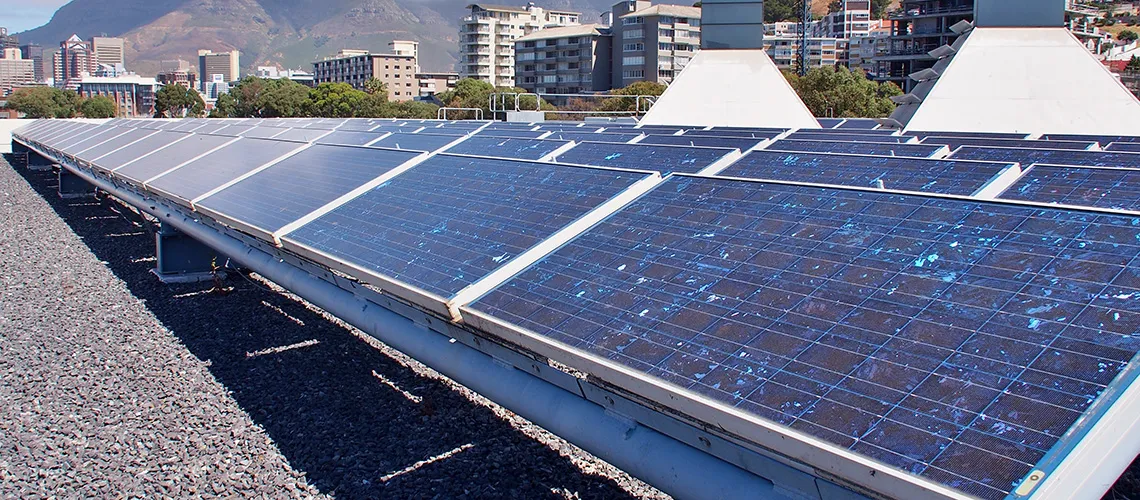With 2023 set to be the warmest year since records began in the mid-1800s, the transition to a decarbonized economy has become an urgent priority globally. Yet, despite increasing efforts by many countries to limit emissions, the combined climate commitments pledges could only bring us closer to limiting the global temperature rise to 2.5 degrees Celsius by the end of the century, falling short of the initial 1.5-degree target set by the Paris Agreement. To address this pressing issue, all countries should step up their commitments to phase out from coal and accelerate the deployment of renewable sources.
Achieving the more ambitious target of limiting global warming to 1.5 degrees Celsius demands significant decarbonization efforts, particularly in emerging economies, which historically bear the least responsibility for the climate crisis. (see Figure 1)
Figure 1: Annual CO2 emissions by country since the industrial revolution
Image

The challenge of climate change underscores a fundamental equity concern, which was a key stumbling block to reach a global agreement to phase out coal during the 26th Conference of the Parties in Glasgow in 2021. Unfortunately, no agreement was reached at that time, largely because several major emerging market economies, heavily reliant on coal for energy production, did not sign on, arguing that developed countries should shoulder the costs of their transition. In 2009, developed countries pledged to collectively mobilize $100 billion annually to assist developing and emerging nations in their transition efforts. Regrettably, they have struggled to fulfill this commitment.
Why do governments seem to neglect the urgency of transferring resources where they can achieve the greatest emissions reduction?
A crucial factor lies in the inherently political nature of environmental policies. These policies are often perceived as liabilities or assets, depending on the political party, and as such sensitive to electoral cycles. For instance, the withdrawal of the United States from the Paris Agreement in 2016 caused delays in the implementation of measures initiated by the previous administration. Given that electoral cycles are much shorter than the long-term agreements needed to combat climate change, governments often lack the commitment necessary to implement effective climate policies, leading to a global coordination failure.
When political frictions limit the use of environmental regulatory tools, financial markets may offer a decentralized incentive to enable the global transition.
If investors are motivated by the desire to mitigate the social harm associated with their own actions, they may willingly subsidize decarbonization if given the option. Financial securities tied to carbon emission reduction, such as Sustainability-Linked Bonds (SLBs) and Loans (SLLs), can bypass political constraints and facilitate cross-country transfers to regions with greater decarbonization potential. A recent paper by Allen, Barbalau, and Zeni (2023) formalizes this concept, demonstrating that carbon-contingent securities can serve as an alternative to regulation, free from political constraints, and can even replace regulation if substantial funds are channeled through these markets.
Whereas the results outlined in Allen, Barbalau, and Zeni (2023) are theoretical, it is worth noting that real-world versions of carbon-contingent securities, such as SLBs and SLLs, have already emerged in sustainable debt markets. These financial instruments tie interest rates to an issuer’s sustainable performance against carbon emissions reduction targets. Importantly, these instruments have mobilized around $1.6 trillion in capital as of 2022, dwarfing the $100 billion pledge to developing countries. Furthermore, this form of carbon-contingent financing has gained traction in countries where support for regulatory measures has been lacking (see Figure 2). By combining the global nature of capital markets with the incentives of carbon pricing, these securities have the potential to play a pivotal role in reducing carbon emissions.
Figure 2a: Stringency of the current environmental regulation measured by the direct or implied price of carbon in $/CO2 tones equivalent.
Image

Data collected from the World Bank.
Figure 2b: Geographical distribution of sustainability-linked debt (which includes corporate, and government issued sustainability-linked loans and bonds) relative to all debt (corporate and government issued loans and bonds) issued since 2013.
Image

Data collected from Bloomberg. A more intense shade of green (blue) indicates a higher proportion of sustainability-linked debt relative to total debt (a higher carbon price respectively).
However, it’s essential to consider potential downsides. The authors warn of counterproductive implications in equilibrium, suggesting that the anticipation of financial market solutions may reduce support for regulation. This could result in welfare losses when political constraints are not severe, or when financial resources available for the transition are limited.
Furthermore, the effectiveness of financial markets hinges on the design of their instruments. Hartzmark and Shue (2023) caution that ‘sustainable investing,’ that diverts capital away from polluting firms towards green ones, can inadvertently make the former even more polluting while not significantly benefiting the latter. This finding is consistent with Allen, Barbalau, and Zeni (2023) view that carbon-contingent financing should only occur when an issuer’s technology has enough decarbonization potential.
In practical terms, there are challenges related to emerging and developing markets, including the perceived risks for foreign investors and concerns about measurement technologies and corruption. Multilateral Development Banks (MDBs) and international organizations have a crucial role to play in creating blended finance solutions that mitigate these risks, and in providing the infrastructure necessary to allow contingent or output-based finance in developing countries. Guarantees, public private partnerships, especially for infrastructure, syndicated loans, and climate and banking policy hold promise for mobilizing private capital in support of the energy transition , that they crowd in additional private capital that would not otherwise be deployed and that those funds are invested in projects with the large payoffs in terms of sustainable growth.
Source : Worldbank





